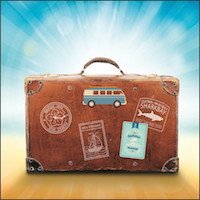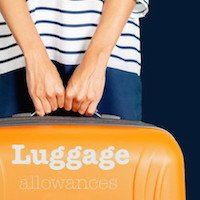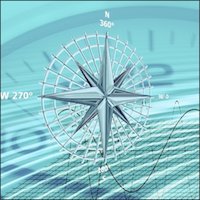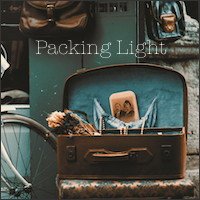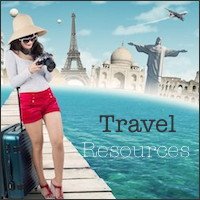How to Buy the Best Luggage
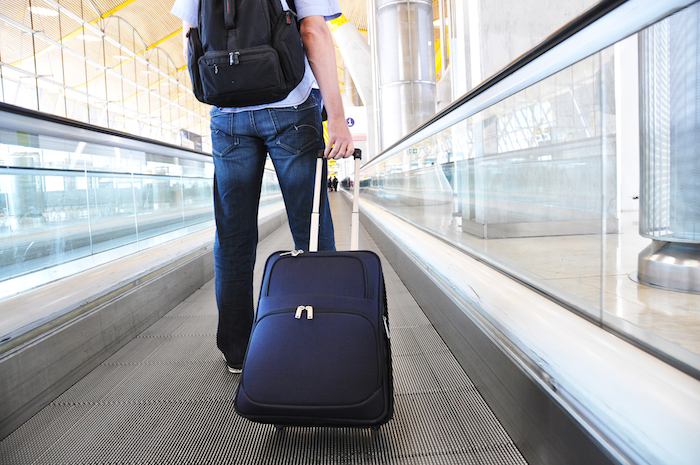
There are a lot of options when you're looking at travel bags and choosing the best luggage from an enormous selection of styles, types, materials and colors may seem daunting - but it doesn't have to be.
There are some features that definitely make a better bag and we've listed them here along with things to look for when you're shopping for luggage.
In any case the best luggage keeps your belongings together and protected, is easy to manage on all types of surfaces and fits in allotted spaces when underway.
Here are some tips to help you choose great travel bags that go the distance in every way.
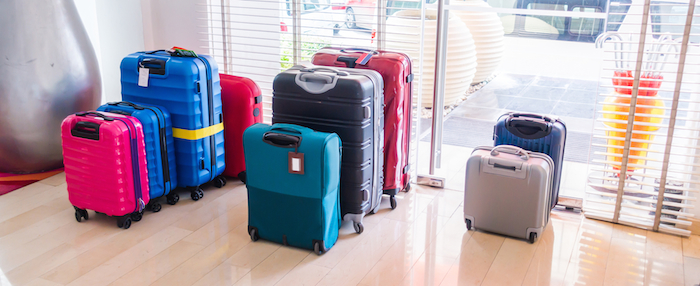
What Makes the Best Luggage?
There are certain things that make a piece of luggage great and things you should look for to ensure that you're getting a piece of travel gear that can keep up with you.
First you need to decide which type is best for your particular needs. If you don't know check this page that explains the pros and cons of each luggage type.
Zippers
Zipper malfunctions are the bane of travelers and they usually surface at the worst possible moment. It doesn't really matter whether your suitcase is made of gossamer or titanium if the zipper doesn't work properly.
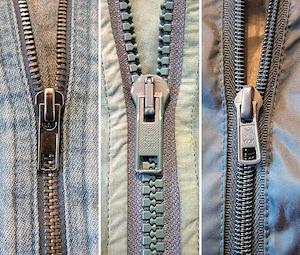
There are 2 basic types of zipper - chain and coil and of the two the chain is the better choice for luggage.
Chain zippers are composed of two rows of teeth that interlock with each other, the teeth can be metal or plastic. In general these are more durable and secure than the coil type.
Coil zippers (far right) are made from a continuous coil of nylon that interlocks at the pinch point of each loop. These are a more light weight option but not as secure as the chain type. Coil zippers can be forced open by pushing an object like a pen or knitting needle between the coils. Once an opening has been made it's easy to pull the zipper apart and gain access to the contents. Still, they're used by some very reputable luggage manufacturers with success.
Best Luggage Wheels
Four Wheeled Bags
Four wheelers are the best luggage for trips where you will go directly
from airport tiles to the lobby of a hotel with smooth floors all the
way. On smooth surfaces this type of luggage glides beside in front or behind you with little effort.
Check the wheels to see that they spin freely, swivel in all directions and seem solidly fixed to the case. Choose screws over rivets for securing them to the suitcase, they're more durable and more repairable.
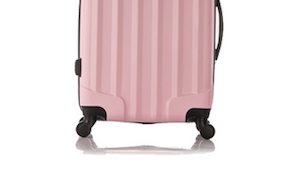
Four wheel or spinner suitcases have wheels that extend below the case and are riveted or screwed on to the base. They're left exposed and free to swivel so that they can keep that multi-directional thing going and that's a good thing. Their position on the bag leaves them more vulnerable to damage and that's not a good thing. Also, the wheels must be included in the overall measurements when boarding an aircraft.
You see the empty space between the bag and the floor? The airlines count that space as part of your luggage allowance ... but you you don't get to pack anything in it.
We all have our favorites ... so we asked you ... what bag type do you prefer for travel?
If
we were going to choose the best luggage, based on what you
told us it would have to be the Two wheeled carry-on roller. Our survey, found here,
revealed the roller as the hands down winner.
Two Wheeled Rollers
The basic rolling flight bag with 2 in-line wheels are the traveler's choice according to our survey and there are several reasons that it won over the spinner models.
The wheels are somewhat recessed into the suitcase which makes them less likely to get hung up, twist out of shape or break off. Even more than that the wheels take up way less of your luggage allotment so you have more packing space than you do in a 4 wheeler of exactly the same size.
Although the wheels move only back and forth they perform better on uneven surfaces like cobblestones and rugged pathways than multi-directional wheels do. In-line wheels climb curbs and stairs better than 4 wheelers too. Because the wheel assembly is less complex there is less potential for damage.
Additionally the bag stands stationary in an upright position even on an incline.
The Shell Contributes to More Than Looks
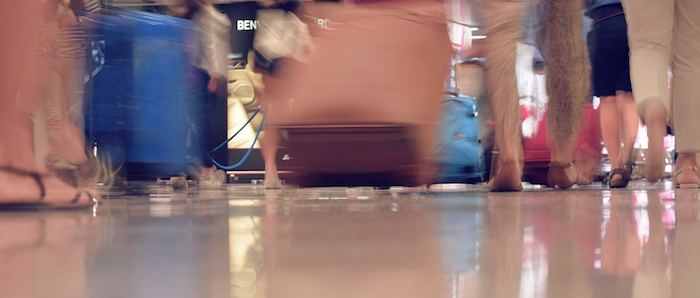
The materials that envelop your bag are responsible for protecting the contents from weather, tumbles and light fingers .. and looking great.
Some
people like the hard shell and others like a soft covering and there
are plusses and minuses to both. Where you're going will have an impact on the best luggage to choose.
Hard Shell Cover
A hard shell protects the contents of the bag better from rain and rough handling than softies do. They're sleek and colorful and have a space-age look, however ... if it doesn't fit within the confines of your bag there's no "give" that allows you to squeeze in the bicycle sculpture that you bought at the market.
Also, if you need to access something from inside your clam shell style bag while underway you'll have to lay it down and completely open the suitcase which can be awkward ... to say the least.
Composed of different materials aluminum to polycarbonite to ABS to some of which are more durable than others.
- Aluminum is the most durable and doesn't show scratches (as long as you stick with the aluminum color). It does dent though and it's the heaviest option as well as the most expensive.
- Polycarbonite is a strong and lightweight material that works well for luggage. It's a little pricier than the ABS and a lot less spendy than aluminum.
- ABS is fairly durable and is the most economical material used in the production of hard sided luggage.
- Composites of Polycarbonite and ABS combine features of both materials and the end product is a little better than ABS but not quite as good as polycarbonite by itself.
There's also the scratch factor - the best luggage is scratch resistant and the pigment goes all the way through the material so that if it does scratch it won't show as much as if the surface color is scraped off allowing a color underneath to show through.
Soft Shell Covering
Soft shells, on the other hand, are generally configured with outside pockets that keep documents and essentials easy to access. The fabric is just pliable enough to fit that last minute item in. Most frequently the soft sided luggage is coupled with 2 rather than 4 wheels.
The downside to the soft outer shell is that it is more susceptible to damage from sharp objects whether deliberate or accidental and weather resistance is not as good as that of a rigid material.
Get a high denier (measure of durability) fabric with chunky chain style zippers to increase the functionality of your soft sided bag.
Probably the thing we like best about the soft luggage is the pockets on the outside of the bag that keep the things you need access to handy.
Size
Although you'll find many declarations stating that a bag is "Official Carry-On Size" there really is no such thing. Size limitations can differ even in the same airline, depending on the plane. Every airline has its own size limitations based on stowage capacity in the aircraft and restrictions are subject to change at their discretion.
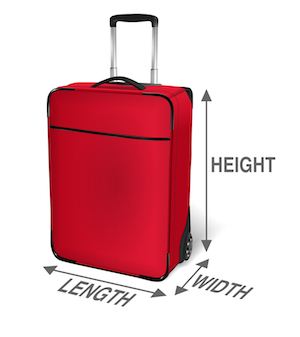
There ARE however, some guidelines that'll help.
Most major American Airlines allow carry-ons with a maximum measurement in inches of 9 x 14 x 22 or in centimeters of 22 x 35 x 56.
That's about as big as it gets for carry-on and it'll be too big for some planes. Many European airlines have limits that are even smaller and in general the smaller the aircraft the less you can bring.
Take a tape measure when you go shopping and measure the outside circumference including wheels and handle or if you're buying on line check the reviews.
Airline regulations are in a constant state of change. Some airlines are beginning to insist that your personal item fits inside the carry-on. Crazy.
The Best Luggage Handle
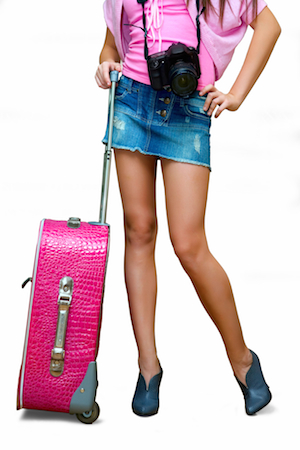
The handle should slide in and out effortlessly and be long enough that you can walk without stooping. Additionally the handle should slide completely into the bag and stay securely in place when being stowed in allotted compartments.
Handle length makes a big difference especially if you're tall. The handles are almost always adjustable, but some extend only 39 inches (from the floor to the tip of the fully extended handle). That length is fine if the person pulling the bag is 5' 6" or shorter. Taller than that and the suitcase follows too closely and bangs into the heels of the puller as they walk unless they hunch down which is uncomfortable and besides, rolling luggage is supposed to make things easier.
If you are taller (between 5' 7" and 6' 3" or so) make sure the handle will extend to at least 41" from the floor to the top of the handle.
A handle of the right length reduces shoulder and muscle strain and makes the overall experience much more pleasurable. Make sure that when the bag is sitting on its wheels and the handle is fully extended that it reaches your waist.
Make the Most of Your Luggage

Top of page - Best Luggage
